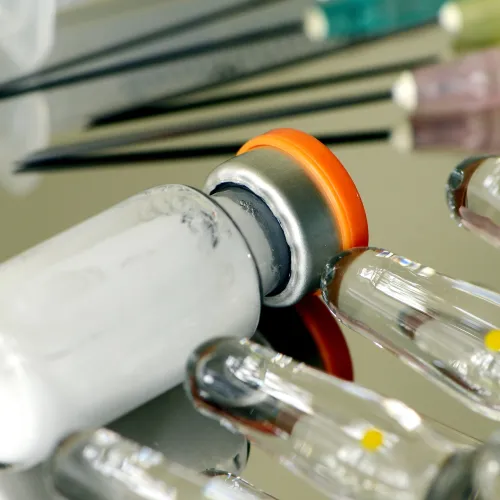Internal Medicine Coding Alert
Get Ready for Telehealth Additions, Code and Revenue Changes

Ring in the New Year with the final 2018 PFS. Telehealth, preventive health, and drug delivery implants. When the Centers for Medicare and Medicaid Services (CMS) finalized its 2018 Medicare physician fee schedule (PFS) last month and revised these services, it made changes that could well impact internal medicine practices beginning Jan. 1. But that's not all. Changes to geographic practice cost indices (GPCIs) could potentially affect your bottom line in 2018. Whether that's a good or bad thing all depends on where you live. Want to make sense of it all? Read our experts' analysis of the report to see what's in it for you. New Codes Added to Telehealth List; Modifier GT to Go For calendar year 2018, CMS will add five existing CPT® and two existing HCPCS codes to its expanding list of services that providers can now offer through telehealth. They are In moving the add-on code +90785 to the telehealth list, CMS notes that the distant site practitioner must be able to mobilize resources at the originating site to defuse the crisis and restore safety when applicable. Per CPT® guidelines, "mobilizing resources" means the practitioner must be able to communicate with staff at the originating site to the extent necessary to restore safety. In addition, CMS has ruled that modifier GT (Via interactive audio and video telecommunication systems) will be eliminated for coding purposes on professional claims as "Medicare's use of a new Place of Service (POS) Code describing services furnished via telehealth ... [and] its use is redundant with the requirements to apply the GT modifier for telehealth services." The addition of these codes to telehealth services, according to Kent Moore, senior strategist for physician payment at the American Academy of Family Physicians, "is generally a good thing, as the codes give physicians more flexibility to do more things remotely, as needed." Moore goes on to note that modifier GT won't be disappearing completely, as it "will still be required for distant site practitioners billing under Critical Access Hospital Method II on institutional claims." HCPCS Implant Codes, Prolonged Service Add-Ons on Their Way CMS is also introducing three new HCPCS codes that will provide more accurate reimbursement to primary care providers involved in the difficult processes of inserting, removing, and reinserting the four-rod, 80 mg, long-acting subdermal drug implants of buprenorphine hydrochloride that are currently being used in the fight against opiate addiction. The codes, which are more specific than CPT® codes 11981-11983, are Additionally, CMS is going to introduce two new add-on codes that will, in their words, allow "practitioners to report the additional time sometimes required to appropriately furnish care to a patient receiving a Medicare-covered preventive service." They are: As Moore explains, you can only use these codes "in the office or other outpatient setting. G0513 is added to the preventive service, and G0514 is added to G0513." Moore goes on to explain that "CMS will only permit you to bill these services with Medicare-covered preventive services," a comprehensive list of which can be found at: https://www.cms.gov/Medicare/Prevention/PrevntionGenInfo/Downloads/MPS-QuickReferenceChart-1TextOnly.pdf. The Bottom Line As it does every year, the document also contains CMS's calculation of payments for each service covered under the Medicare physician fee schedule. This is based on a complex formula that uses relative value units (RVUs) for work, practice expense (PE), and malpractice (MP). All these elements are, in CMS's words, "adjusted by GPCIs to reflect the variations in the costs of furnishing the services," creating the following formula: Payment = [(RVU work × GPCI work)+ (RVU PE × GPCI PE) + (RVU MP × GPCI MP)]× conversion factor (CF). Since 2007, Chip Hart, director of PCC's Pediatric Solutions Consulting Group in Vermont and author of the blog "Confessions of a Pediatric Practice Consultant," has provided an analysis of the GCPI which, he believes, is an overlooked factor in the equation that explains why "some localities have had massive swings in RVU value over the last decade." Though Hart's work focuses on pediatric practices, his preliminary GPCI analysis for 2018 can be applied across all specialties and is an important predictor of practice revenues for the upcoming year. What Will Be in Your Practice's Wallet Next Year? Hart's analysis shows some big swings in revenue across the US, from a 4.6 percent drop in Indiana to a 16.9 percent increase in Puerto Rico, with most areas seeing a roughly 1 percent drop over last year's income. The highlights? "If you're in Orange County, California," Hart predicts, "your RVUs will drop 3 percent in 2018 whether you like it or not. Idaho? -4.3 percent. Practices in Massachusetts get a 5 percent boost! Practice in southern NJ? That -1.8 percent comes right out of your owner income." But, as Hart cautions, "you really need to look at these swings over time." To see how the GCPI will affect your practice in 2018, and to read more of Hart's analysis, visit Hart's blog at http://chipsblog.pcc.com/2018-gpci-analysis-get-it-here-first/. And to read the whole 2018 PFS, go to https://www.gpo.gov/fdsys/pkg/FR-2017-11-15/pdf/2017-23953.pdf.
Related Articles
Internal Medicine Coding Alert
- News You Can Use:
Get Ready for Telehealth Additions, Code and Revenue Changes
Ring in the New Year with the final 2018 PFS. Telehealth, preventive health, and drug [...] - Coding Quiz:
Take This Quiz to Refresh Your HIV/AIDS Coding Skills
Stages, sequencing are key. There's reason to be optimistic about the current state of human [...] - ICD-10-CM Coding:
Specify Status, Site, for UTI Coding Success
These three hints will help you simplify urinary tract infection coding. Browse through the ICD-10-CM [...] - Coding Quiz Answers:
Here Are the Answers to Our HIV Coding Quiz
Compare yours to those of our experts. Answer 1:The answer to this question depends on [...] - You Be the Coder:
Decide Method, Simple or Complex, to Solve This I&D Dilemma
Question: One of our diabetic patients recently competed in a marathon. Several days later, he [...] - Reader Question:
Educate Yourself About Education Codes
Question: To meet the needs of a number of our patients with diabetes, our provider [...]




